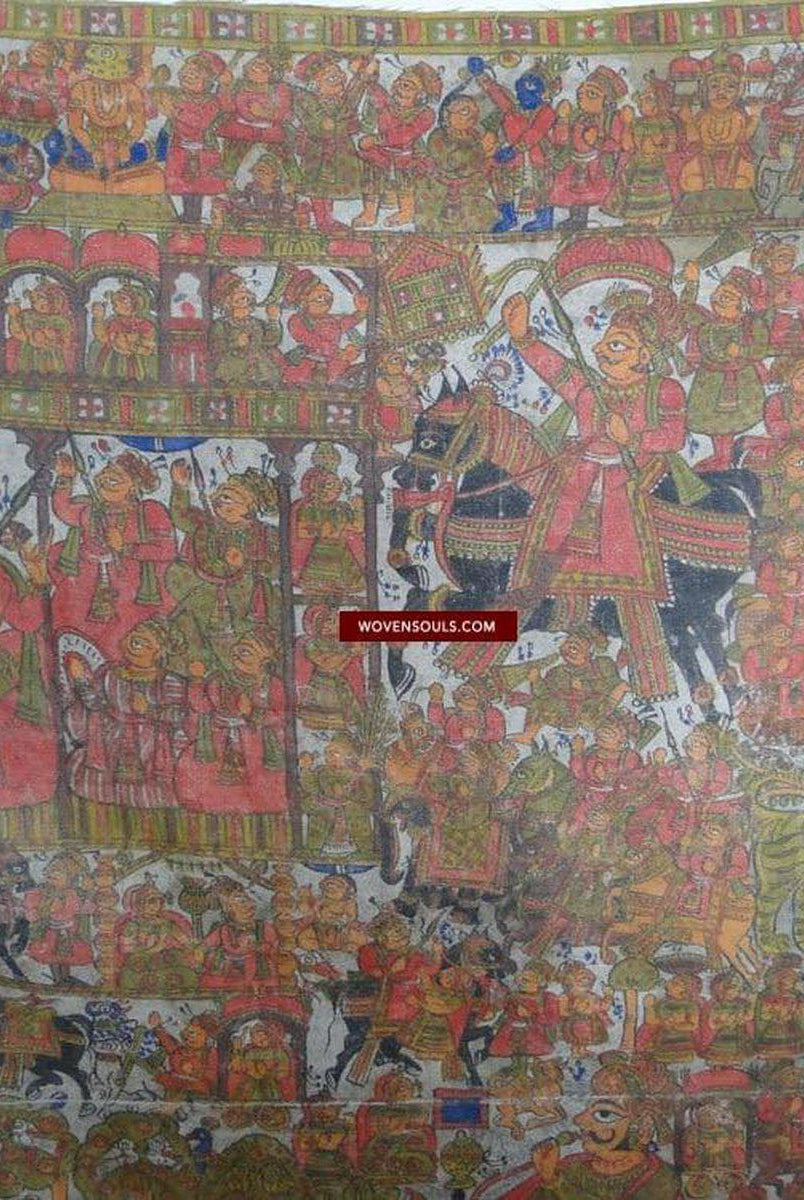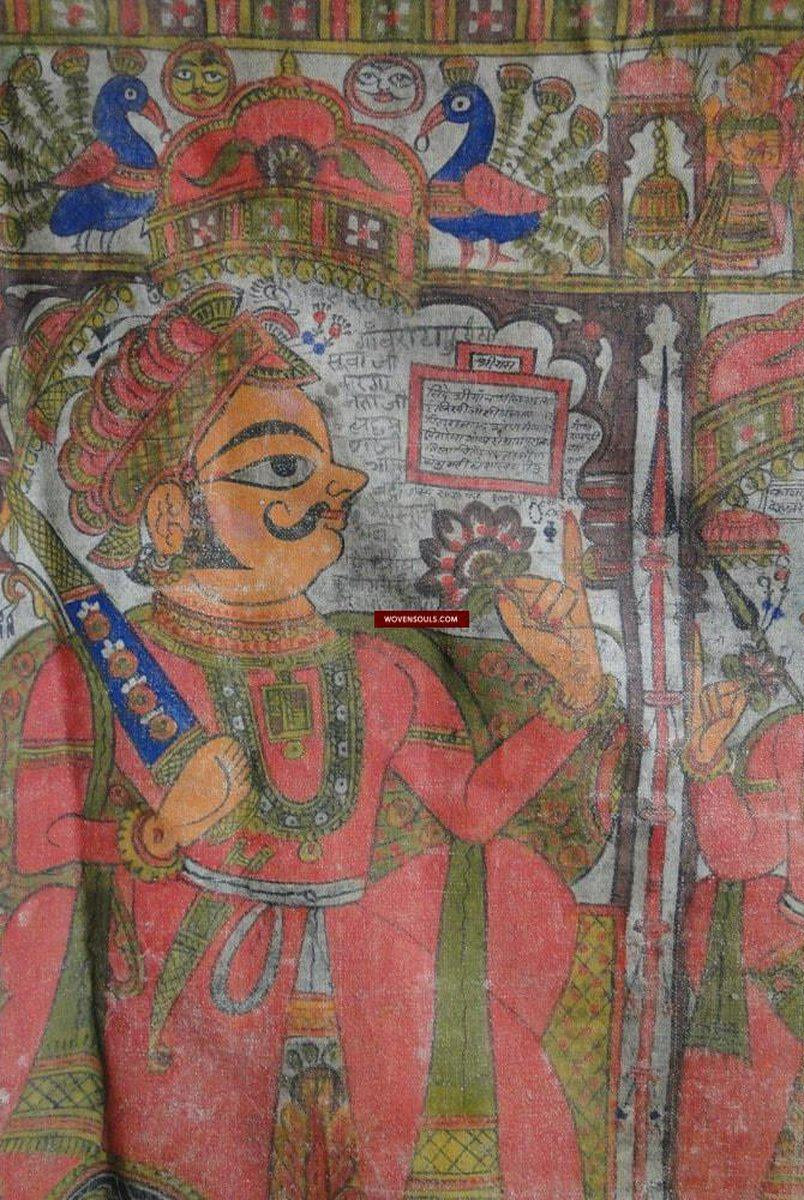Pabuji, Devnarayan and Ramdevji 'PHAD' narrative paintinggs.
The shortest way to describe the "Phad" is ‘a devotional mural storyboard painted on cloth’
But to understand the Phad in detail, an understanding of the context is necessary.
So let us move back in time to the 14th century when Pabuji Rathore, a prince, was born to a celestial nymph. He was so revered as a prince that after his death his status was elevated to that of a folk deity. To worship him, shrines were built and to keep the legend of his life alive, detailed stories describing his life were painted on the walls for all visitors to learn from.
In order to spread the stories further and keep them alive in the hearts of people living in distant lands, the message would have to be sent out and repeated beyond the reach of the walls of the stationery shrines.
In those days, the only method of long distance public government communication was the little army of traveling messengers on horseback. Each would set off in a different direction, stop at every village, sound their drums to catch the attention of the villagers and when a crowd had gathered, they would read out the public announcement verbatim from the scrolls they carried. The reading would last only a few minutes in each village.
This method provided the basic structure for the purpose of disseminating the legend of Pabuji to the public. With an alteration built in to suit the unique purpose. If the message of Pabuji was to captivate the mind, heart and souls of the audience, unlike the reading of the government scrolls, this message would need to be presented in a compelling and mesmerizing way in a leisurely environment wherein the audience could completely absorb the details.
And so the first multimedia presentation was born.
Exactly as it is in the corporate world of the 21st century, that 14th century presentation consisted of
– The main presenter : The Bhopa
– His assistant : The Bhopi
– The visual aid : The Phad textile
– The music : The Ravanhatta played by the Bhopa
– The lighting : The long armed oil lamp carried by the Bhopi
This compact unit traveled from one village to another with the purpose of keeping the legend of Pabuji alive.
The Bhopa arrives at a village and sets up the performance area. The 15 foot long Phad artwork is suspended from two bamboos like a screen and the area in front of it is cleared for the Bhopa and Bhopi to perform. Villagers arrive and seat themselves on the ground facing the screen and once the sun has set, the show begins with a little worship ritual of the Phad.
The Phad contains over 70 different scenes from the life of Pabuji that will be narrated through the night. In order to prevent the audience from being distracted by too many illustrations, the screen is left in darkness. Then as the Bhopa sings out a specific scene, the Bhopi provides the spotlight for that particular scene using her handheld oil lamp.
The order in which the scenes are narrated is intentionally different from the order in which they are drawn on the Phad. This allows an opportunity for movement and dance from one end of the Phad to the other thus creating additional entertainment for the audience.
And so, scene-by-scene, the pair move forward and backward along the Phad and light up the night with their singing, with their Ravanhatta music and the enchanting glow of the oil lamp.
This performance continues even today in the villages and towns of southern Rajasthan & in Malwa, a district of Madhya Pradesh. About 200 roaming Bhopas and their wives continue their ancestral vocation of spreading the stories of Pabuji*.
These Bhopas live very frugal lives and their homes are usually mud homes that are susceptible to nature and often washed out during the rains. Their travel conditions combined with the harsh climate of the region all have a detrimental effect on their possessions including their Phads. Each Phad therefore, although built for a rugged life, rarely lasts beyond 3 generations of active use.
Available for acquisition in this gallery are the few old ones that came my way over the years directly from the source.
***


![657 Complete Old Phad Narrative Painting [LARGE] / Rajasthan-WOVENSOULS-Antique-Vintage-Textiles-Art-Decor](http://wovensouls.com/cdn/shop/products/657-complete-old-phad-mural-painting-from-rajasthan-2.jpg?crop=region&crop_height=1200&crop_left=398&crop_top=0&crop_width=804&v=1725358186&width=1600)


